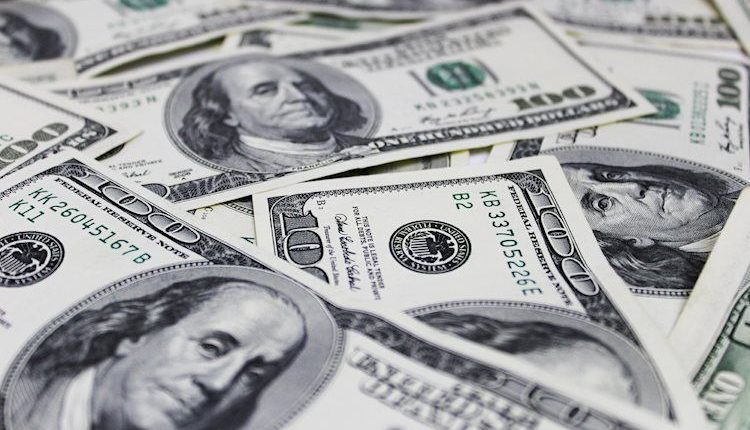- The DXY sank to 105.15, its lowest level since mid-September.
- US government bond yields are retreating, also standing at lows since September.
- Job creation decelerated in October in the US as well as Hourly Earnings, while the Unemployment Rate increased.
The US Dollar (USD) witnessed a significant drop on Friday, with the US Dollar Index (DXY) descending below 105.10. The Greenback price dynamics were set by weak labor market data from the US and falling US bond yields as weaker-than-expected Nonfarm Payrolls (NFP) give investors confidence that the Federal Reserve (Fed) won’t deliver any more hikes.
Despite the Federal Reserve’s (Fed) recent restrictive measures, the United States economy continued to showcase unparalleled resilience, outshining its global counterparts, which favoured the USD in the previous weeks. However, the labour market is starting to show weakness, which makes investors bet on the Fed approaching the end of its tightening cycle, which seems to be weakening the Greenback as the tightening effects become visible.
Daily Digest Market Movers: US Dollar plunges amid decelerating job creation and rising unemployment
- The US Dollar Index declined below 105.10, down 1%on the day, mainly driven by weak labor market data reported earlier in the session.
- The US Bureau of Labor Statistics reported that the Nonfarm Payrolls from October came in lower than expected. The US added 150,000 jobs in October vs the expected 180,000 and decelerated from its revised previous figure of 297,000.
- The Unemployment Rate came in at 3.9% in October, above the expected 3.8% and accelerated compared to its previous reading of 3.8%.
- The Average Hourly Earnings increased by 0.2% MoM but rose 4.1% YoY, higher than the expected 4% and its previous reading of 4.3%.
- In addition, economic activity data also came in weak. The Institute for Supply Management (ISM) Services PMI fell short of expectations. The figure came in at 51.8 in October, lower than the consensus of 53 and its last figure of 53.6.
- Likewise, the S&P Global Services PMI from October came in at 50.6, lower than the expected 50.9 and decelerated from its previous figure of 50.9.
- In the meantime, the US Treasury yields continued to decline The 2-year rate fell to 4.90%, its lowest level since mid-September, while the longer-term 5 and 10-year rates retreated towards 4.50% and 4.54%, also hitting multi-week lows.
- Due to the weak data, dovish bets on the Fed increased. According to the CME FedWatch Tool, the odds of a 25 basis points hike in December fell to 9%, which added selling pressure to the Greenback.
Technical Analysis: US Dollar Index extends losses as bears step in after conquering the 20-day SMA
The DXY shows a neutral to bearish technical stance on the daily chart. The Relative Strength Index (RSI) exhibits a negative slope below the 50 threshold, while the Moving Average Convergence (MACD) histogram prints increasing red bars. Additionally, the pair is below the 20-day Simple Moving Average (SMA) but above the 100 and 200-day SMAs, implying that the bulls remain in control on a broader scale but that the sellers are in command of the short-term.
Support levels: 105.10, 105.00, 104.70.
Resistance levels: 105.50, 105.80, 106.00.
US Dollar FAQs
The US Dollar (USD) is the official currency of the United States of America, and the ‘de facto’ currency of a significant number of other countries where it is found in circulation alongside local notes. It is the most heavily traded currency in the world, accounting for over 88% of all global foreign exchange turnover, or an average of $6.6 trillion in transactions per day, according to data from 2022.
Following the second world war, the USD took over from the British Pound as the world’s reserve currency. For most of its history, the US Dollar was backed by Gold, until the Bretton Woods Agreement in 1971 when the Gold Standard went away.
The most important single factor impacting on the value of the US Dollar is monetary policy, which is shaped by the Federal Reserve (Fed). The Fed has two mandates: to achieve price stability (control inflation) and foster full employment. Its primary tool to achieve these two goals is by adjusting interest rates.
When prices are rising too quickly and inflation is above the Fed’s 2% target, the Fed will raise rates, which helps the USD value. When inflation falls below 2% or the Unemployment Rate is too high, the Fed may lower interest rates, which weighs on the Greenback.
In extreme situations, the Federal Reserve can also print more Dollars and enact quantitative easing (QE). QE is the process by which the Fed substantially increases the flow of credit in a stuck financial system.
It is a non-standard policy measure used when credit has dried up because banks will not lend to each other (out of the fear of counterparty default). It is a last resort when simply lowering interest rates is unlikely to achieve the necessary result. It was the Fed’s weapon of choice to combat the credit crunch that occurred during the Great Financial Crisis in 2008. It involves the Fed printing more Dollars and using them to buy US government bonds predominantly from financial institutions. QE usually leads to a weaker US Dollar.
Quantitative tightening (QT) is the reverse process whereby the Federal Reserve stops buying bonds from financial institutions and does not reinvest the principal from the bonds it holds maturing in new purchases. It is usually positive for the US Dollar.
Read the full article here

